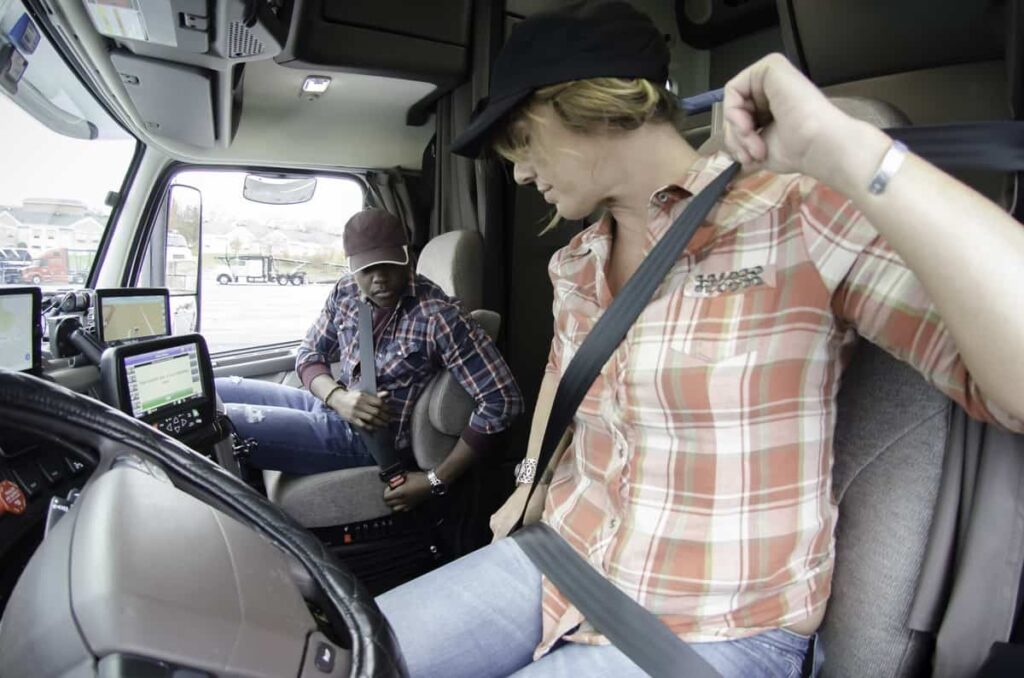Federal regulators are increasingly alarmed by the rising fatality rates among truck drivers due to their failure to utilize seat belts. The lack of seat belt use among these drivers has become a pressing issue, capturing the attention of authorities. Recent data highlighting the increasing number of fatalities has further underscored the urgency of addressing this concern.
“One thing we’re seeing in trucking and other sectors is that seat belt usage is going down,” said Polly Trottenberg, deputy secretary of the U.S. Department of Transportation, speaking at a DOT safety forum last week. “And when we look at the fatality numbers they are extraordinarily disproportionately people who are unbelted.”
The most recent data collected by the National Highway Traffic Safety Administration reveals a troubling trend regarding seat belt usage among truck drivers involved in fatal crashes. In 2021, a staggering 64% of truck drivers killed in accidents involving large trucks were not wearing seat belts. This figure represents an increase from 59% in 2019 and a significant jump from 44% in 2020.
Further analysis of the data on deaths of individuals occupying large trucks, whether as drivers or passengers, highlights that only 42.6% were wearing seat belts at the time of the accidents. Alarmingly, among those who were not wearing seat belts, nearly 75% were completely ejected from the truck upon impact.
These statistics paint a concerning picture, emphasizing the critical role that seat belt usage plays in preventing fatalities and reducing the severity of injuries in truck accidents. The findings are particularly worrisome to federal regulators, who are intensifying their efforts to address the issue and promote the importance of seat belt compliance among truck drivers.
“This is a trend that we’re really focusing on, because it’s pretty clear the numbers are increasing,” said Jessica Powell, a Federal Motor Carrier Safety Administration statistician who presented the data on Tuesday during a meeting of FMCSA’s Motor Carrier Safety Advisory Committee (MCSAC).

During a two-day meeting of the Motor Carrier Safety Advisory Committee (MCSAC), the agenda prominently featured the finalization of a three-year strategic plan for the agency. The plan is set to be approved later this year following a thorough review by FMCSA Administrator Robin Hutcheson.
Recognizing the gravity of the issue, Adrienne Gildea, the deputy executive director of the Commercial Vehicle Safety Alliance and vice chair of the committee, regards the problem as significant enough to warrant inclusion in the FMCSA’s strategic plan. This indicates that the committee and its members consider the matter to be of utmost importance and deserving of attention and action at the highest level of the agency.
“I think FMCSA should focus across their goals on that issue in particular, including outreach and education,” Gildea said during the meeting.
“They should look more into who these drivers are — younger drivers, older drivers, in certain sectors or regions? Digging into that and understanding who is choosing not to use a safety belt is important and an area where once FMCSA has that information there’s a lot of ways it can be used to improve seat belt use and reduce those fatalities.”
Powell highlighted the concerning increase in fatal crashes involving large trucks, revealing that the number reached 5,199 in 2021, representing a 16% surge compared to 2020. Equally alarming is the fact that fatalities among occupants of large trucks experienced a 23% spike, reaching 1,019 in 2021. This marked the first time since at least 2005 that the number of such fatalities exceeded 1,000.
Data from the National Highway Traffic Safety Administration (NHTSA) also indicates a rise in pedestrian and work-zone deaths in crashes involving large trucks.
The NHTSA further revealed that speeding was the most common truck driver-related factor in 2021, accounting for 7% of the cases. This includes instances where drivers exceeded the posted speed limit or drove too fast for the prevailing conditions. These statistics emphasize the need to address speeding-related issues among truck drivers to mitigate the risks associated with this dangerous behavior on the roads.
“However, this is such an underreported data element, it’s not a true representation of what’s actually happening on the road,” Powell said, “but it is our best estimate.”





